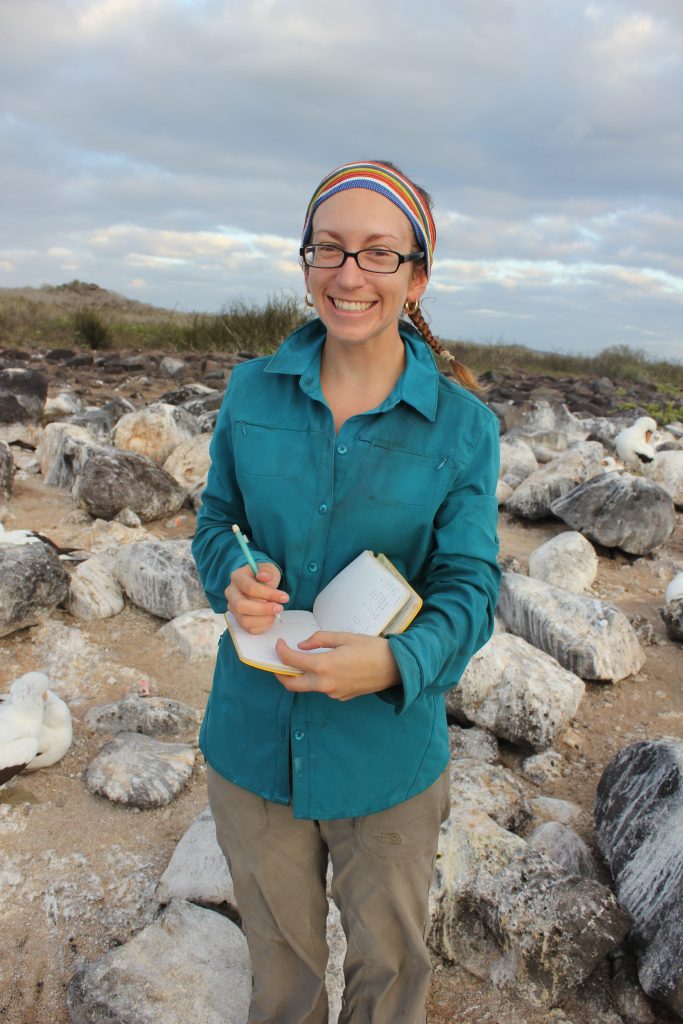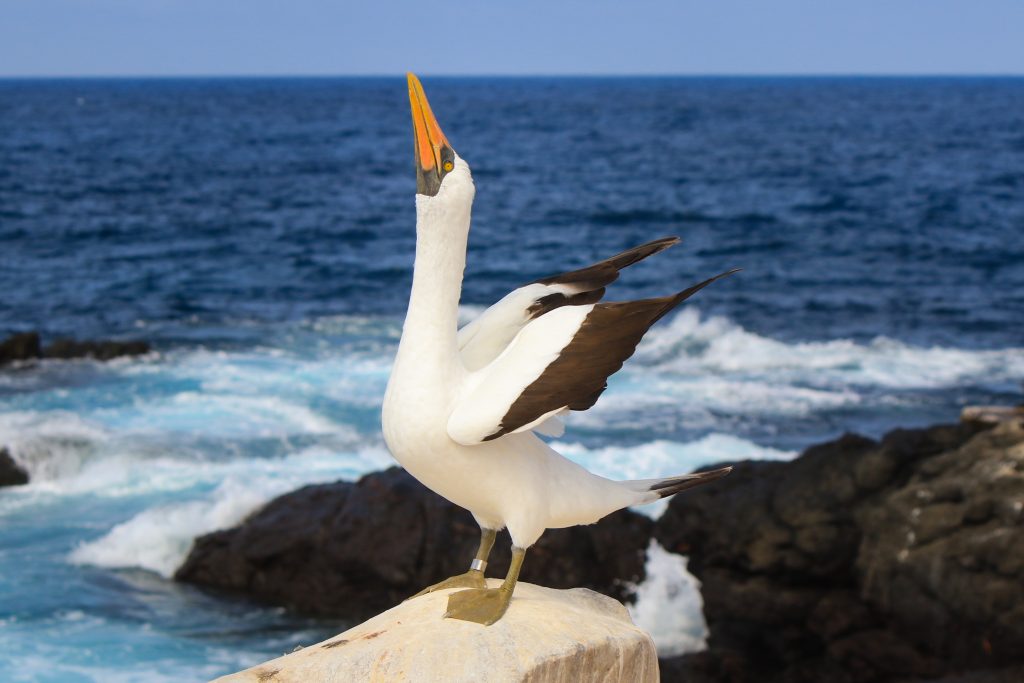A Different Feather: SIT Ecuador alum Jenny Howard studies seabirds
January 28th, 2019 | Alumni, SIT Study Abroad

Isolated locations are appealing to SIT Ecuador alum Jenny Howard, a PhD candidate at Wake Forest University in Winston-Salem, North Carolina. Not long ago, she spent months camping with a small research group on an island in the Galapagos archipelago — just over 550 miles from mainland Ecuador — studying a seabird called the Nazca booby.
“We went down for about three months during egg-laying season,” Jenny says. “Each morning, we would walk through the [bird] colony, see who had a nest, if there was a male or female at the nest.”
Jenny and the others had to endure some unusual conditions to be on hand for those daily observations. “We were camping the whole time, about 20 feet from the beach.”
That sounds idyllic until you realize, for instance, that there’s no fresh water. The group had to bring a three-months supply with them. That also means the only bathtub was the Pacific Ocean. “You get used to having that salt layer left,” Jenny says.
The weather in the Galapagos, too, is not all tropical splendor. “During winter, it gets pretty dry. There are cacti of all different species. The different currents around the islands mean it’s cooler than you might think.” February to May is the wet season. When you’re in the field, it’s not unusual to get really dumped on for an hour or two, then the sun comes out and it’s really humid.
Part of what motivates Jenny to undertake such grand adventures is her experience with SIT. “It’s crazy that it’s now 11 years ago — spring 2008 — when I was part of SIT Ecuador: Comparative Ecology and Conservation.”

As part of SIT Ecuador, Jenny visited some scientifically important spots for the first time. “We got to go to the cloud forest, to the rainforest, and the Galapagos. That was my first trip to the Galapagos. For a biology major, it’s a mecca.”
The students visited several islands in the archipelago, observing animal species. “You don’t necessarily notice at a distance, but there are differences from island to island. With tortoises alone, there are 15 species. That was the first time I saw Nazca boobies, but I didn’t realize I would be studying them for my PhD,” she says
Those first trips with the Ecuador program sparked Jenny’s interest in field science, though she was already a biology major at Kenyon College. Her month-long Independent Study Project, or ISP, would involve more field science. “Having that freedom, that month at the end of the program to explore our own passions — that really motivated me to want to do more with science.”
Jenny chose to spend a month back at the rainforest she’d visited, a biodiversity reserve where she worked with scientists studying spider monkeys.
After graduating from Kenyon, she worked a series of science field jobs that took her to the Mariana Islands, Colorado, New Jersey, Maine, and her first island stint in the Galapagos. Eventually, she became a supervisor on Johnson Atoll, about 900 miles west of Hawaii. It was there she realized she wanted to go back to school and analyze, not just collect, data.
She ended up at Wake Forest in part because of an SIT connection — her crew leader for the Nazca booby study on Espanola Island was Emily Tompkins, who, they soon discovered, was also an alum of SIT Ecuador. Now, the two work in the same lab at Wake Forest.
Jenny says she often encourages undergrads at Wake Forest to consider studying abroad with SIT. “People tend to go to some of the easy choices for study abroad,” she says. “But if you go somewhere and just stay with your friends from the U.S., you’re not going to have the same kind of experience. The homestay was key.”
Jenny plans to finish her PhD in 2020, and hopes to work as a scientist for the government or an NGO so she can continue to pursue the passion for field work that was sparked by SIT.
